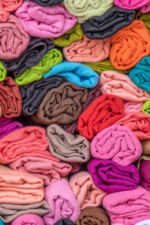Smart Laundry: How to Reduce Water and Energy Consumption in Clothing Care
Laundry is an everyday task, yet we rarely think about the environmental footprint behind it. With smarter choices, you can cut down on bills, save resources, and still keep clothes clean and fresh.
1. Load your machine properly
Running a half-empty washing machine uses almost the same amount of water and electricity as a full load. Always wait until you have enough laundry, but avoid overloading — it strains fabrics and reduces cleaning efficiency.
2. Wash at lower temperatures
Heating water consumes the most energy during a wash cycle. Washing at 30–40 °C removes most dirt as effectively as 60 °C, while using far less power. Reserve hot cycles for bed linen, towels, or heavily soiled items.
3. Use eco programs
Most modern washing machines include eco settings. These cycles take longer but use less water and electricity overall. They are ideal for everyday laundry that isn’t heavily stained.
4. Dose detergent correctly
More detergent doesn’t mean cleaner clothes. Excess leaves residues, irritates skin, and requires extra rinsing. Follow dosage instructions and adjust for your local water hardness.
5. Air-dry whenever possible
Tumble dryers are among the highest energy-consuming appliances in households. Drying on a rack, balcony, or outdoors saves money, energy, and extends garment life.
6. Choose fabrics that need less frequent washing
Breathable natural materials like cotton, linen, and merino wool often stay fresher for longer. Washing them less frequently reduces both wear and resource use.
Conclusion
Eco-friendly laundry doesn’t mean compromising on cleanliness. Lower temperatures, proper dosing, and air-drying not only protect the environment but also prolong your clothes’ lifespan. Small changes in laundry habits add up to meaningful long-term benefits — for your wardrobe, your wallet, and the planet.



